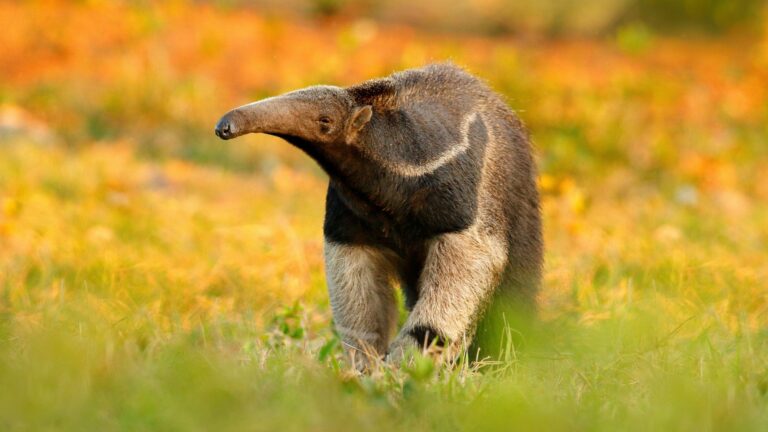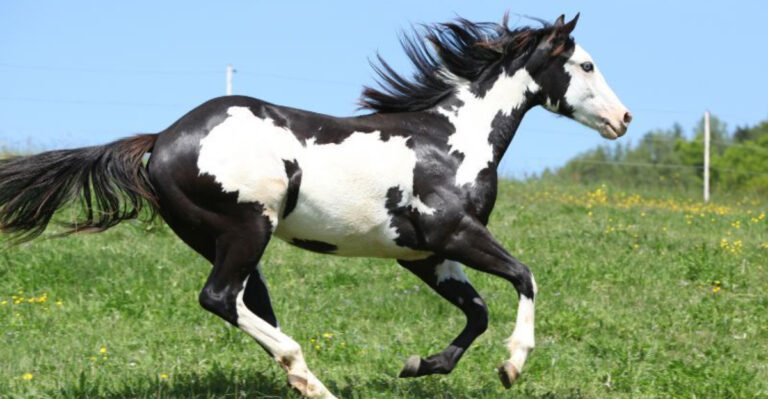7 Flying Snake Species And Where To Spot Them
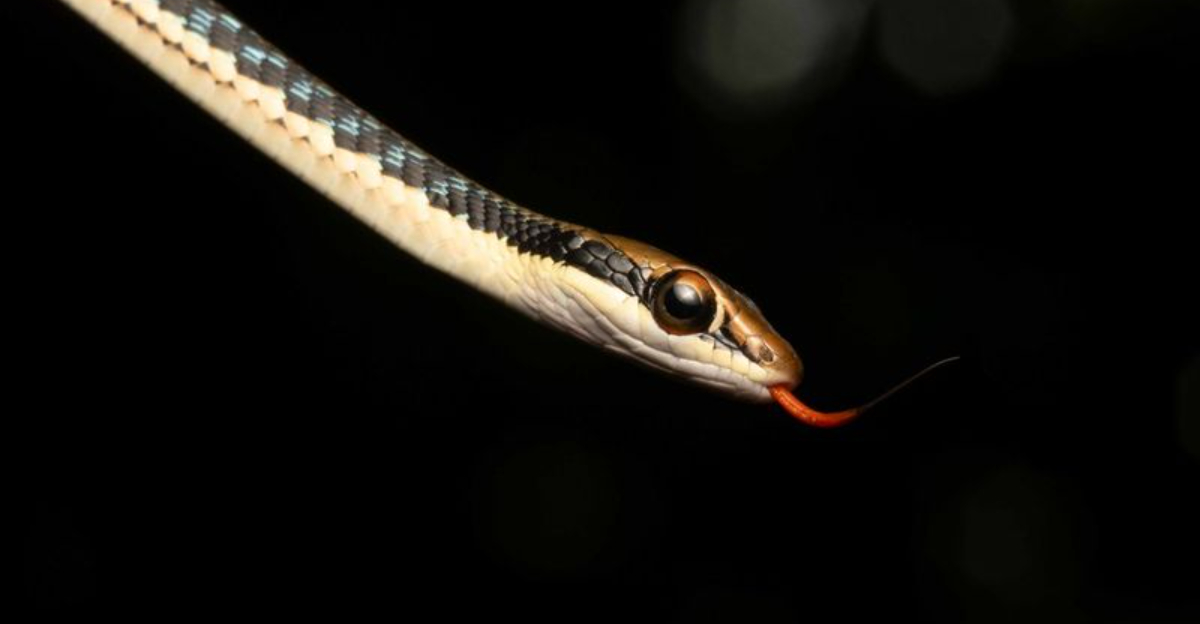
When you think of snakes, the idea of them flying probably doesn’t cross your mind. But in the dense forests of Southeast Asia, these serpents have taken to the skies, gliding effortlessly from tree to tree. Flying snakes are a marvel of nature, using their unique ability to glide as a means to escape predators and hunt prey.
If you’re an adventurer or a wildlife enthusiast, spotting one of these incredible creatures in the wild is an experience you won’t want to miss. Let’s explore fascinating flying snake species and where you can encounter them in their natural habitat.
1. Chrysopelea paradisi – Paradise Tree Snake
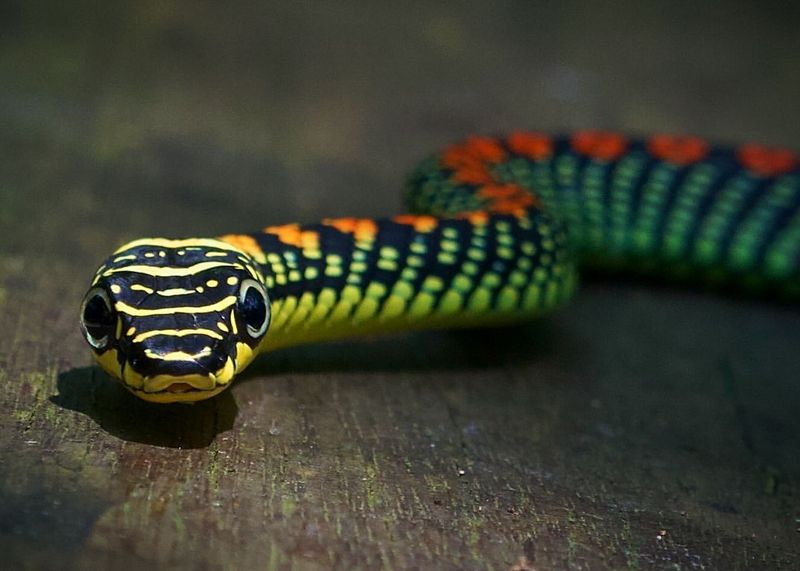
The Paradise Tree Snake is aptly named, not just for its colorful appearance but also for the heavenly way it glides through the air.
Found predominantly in Southeast Asia, this species is known for its unique method of locomotion. It launches itself from high branches and undulates its body to navigate through the air, traveling distances of up to 100 meters.
2. Chrysopelea ornata – Golden Tree Snake
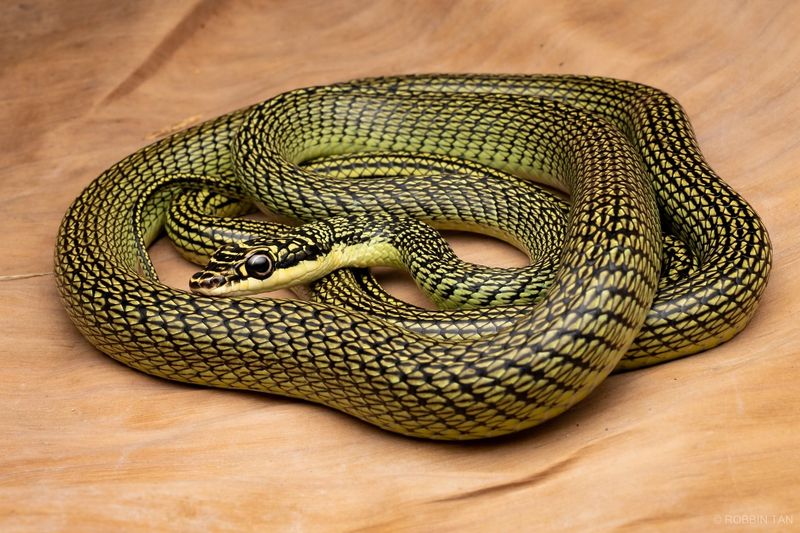
Meet the Golden Tree Snake, a master of aerial maneuvers and a true spectacle of nature’s ingenuity. This snake is found across South and Southeast Asia, with a particularly strong presence in India.
Its name comes from the vibrant yellow and black coloration that adorns its slender body. These snakes are not just pretty to look at; they are also incredibly agile climbers and can often be seen slithering up vertical tree trunks with ease.
3. Chrysopelea rhodopleura – Twin-Barred Tree Snake
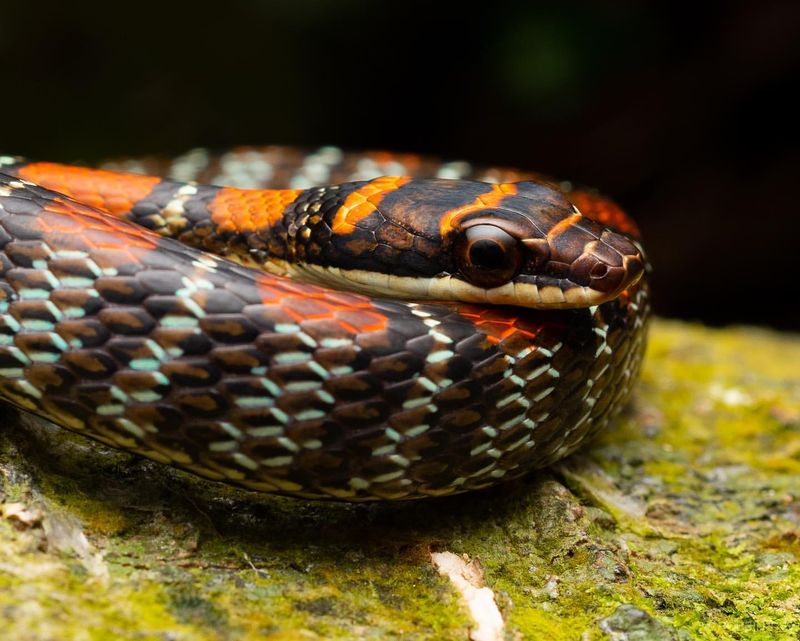
The Twin-Barred Tree Snake is a lesser-known cousin in the flying snake family, but it’s no less impressive. This snake is predominantly found in the forests of Indonesia, where it thrives in the humid, leafy canopy.
Its name comes from the two distinctive red bars that run along the sides of its body, creating a striking contrast against its otherwise greenish hue.This snake’s gliding technique is as refined as its more famous relatives.
4. Chrysopelea pelias – Banded Flying Snake
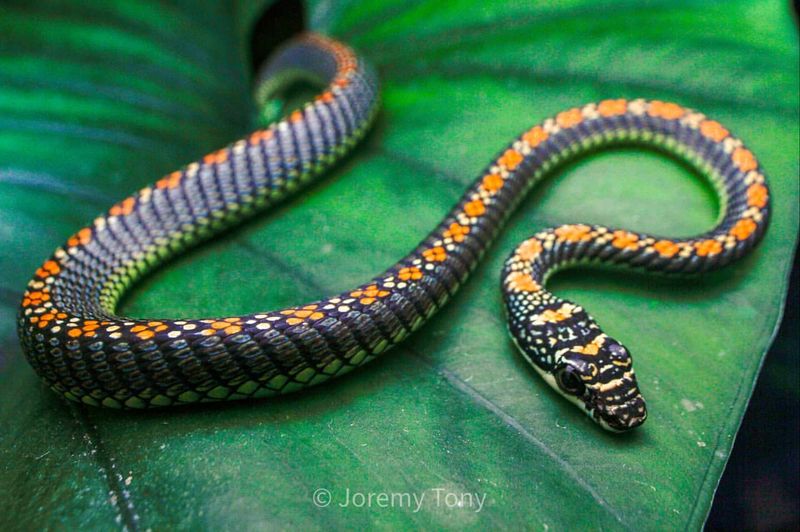
The Banded Flying Snake is a vibrant addition to the family of flying snakes, known for its distinctive pattern of colorful bands running along its length.
This species is native to the rainforests of Malaysia and surrounding regions, where it has adapted to a life among the treetops. With a combination of agility and stealth, the Banded Flying Snake is a master of its environment.
5. Chrysopelea taprobanica – Sri Lankan Flying Snake
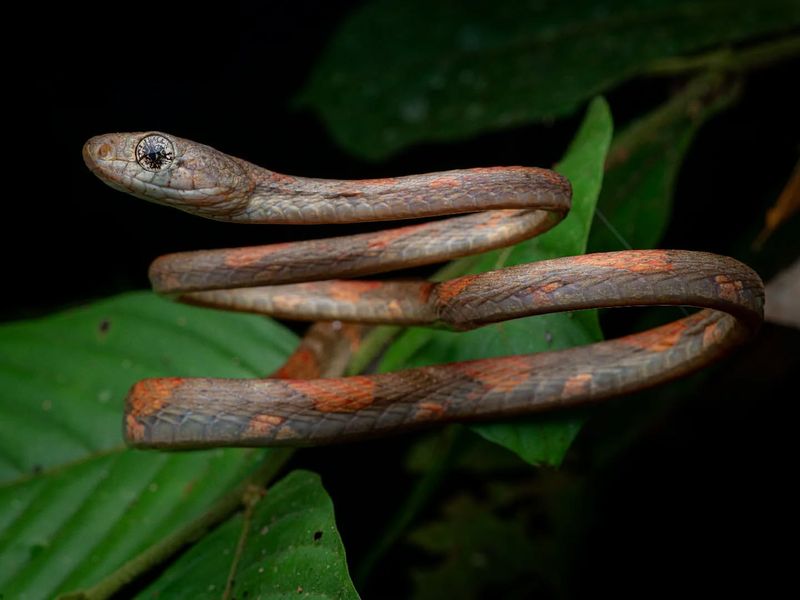
The Sri Lankan Flying Snake, as its name suggests, is predominantly found in the lush forests of Sri Lanka. This enchanting snake is a marvel to behold, with its ability to glide through the air being both a survival mechanism and a spectacle for those lucky enough to witness it.
Sporting a vibrant mix of colors, the Sri Lankan Flying Snake uses its appearance to blend into the forest environment, which is essential for both predator avoidance and stealth hunting.
6. Boiga cyanea – Green Cat Snake
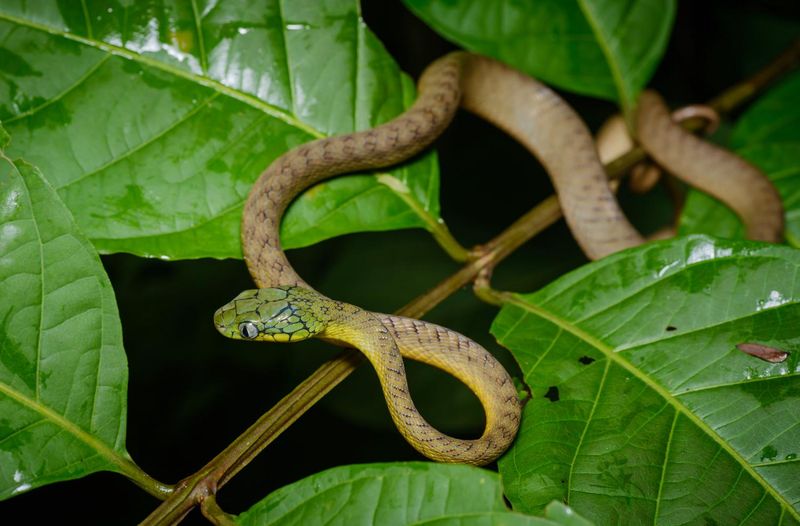
With emerald scales shimmering under the dappled sunlight, the Green Cat Snake moves with an almost hypnotic grace. Native to Southeast Asia, this serpent is often mistaken for its more famous gliding cousins but has its own charm.
The Green Cat Snake prefers dense forests where it expertly maneuvers among trees. Its captivating green hue provides excellent camouflage, blending seamlessly with the foliage. These snakes are nocturnal and hunt small mammals and birds.
A unique feature is its cat-like eyes, which add an air of mystery. Despite its name, it doesn’t glide but impresses with agility and elegance.
7. Dendrelaphis pictus – Painted Bronzeback

The Painted Bronzeback’s slender body, adorned with bronze and iridescent stripes, is a spectacle in motion. Found in South Asia, this species doesn’t truly fly but seems to dance through the trees.
Its habitat includes tropical and subtropical forests where it climbs with remarkable speed. The Painted Bronzeback feeds on a diet of frogs and lizards, utilizing its quick reflexes to catch prey.
A peculiar trait is its ability to puff out its neck, displaying vivid colors as a defense mechanism. This adaptation adds to its enigmatic allure in the wild.




